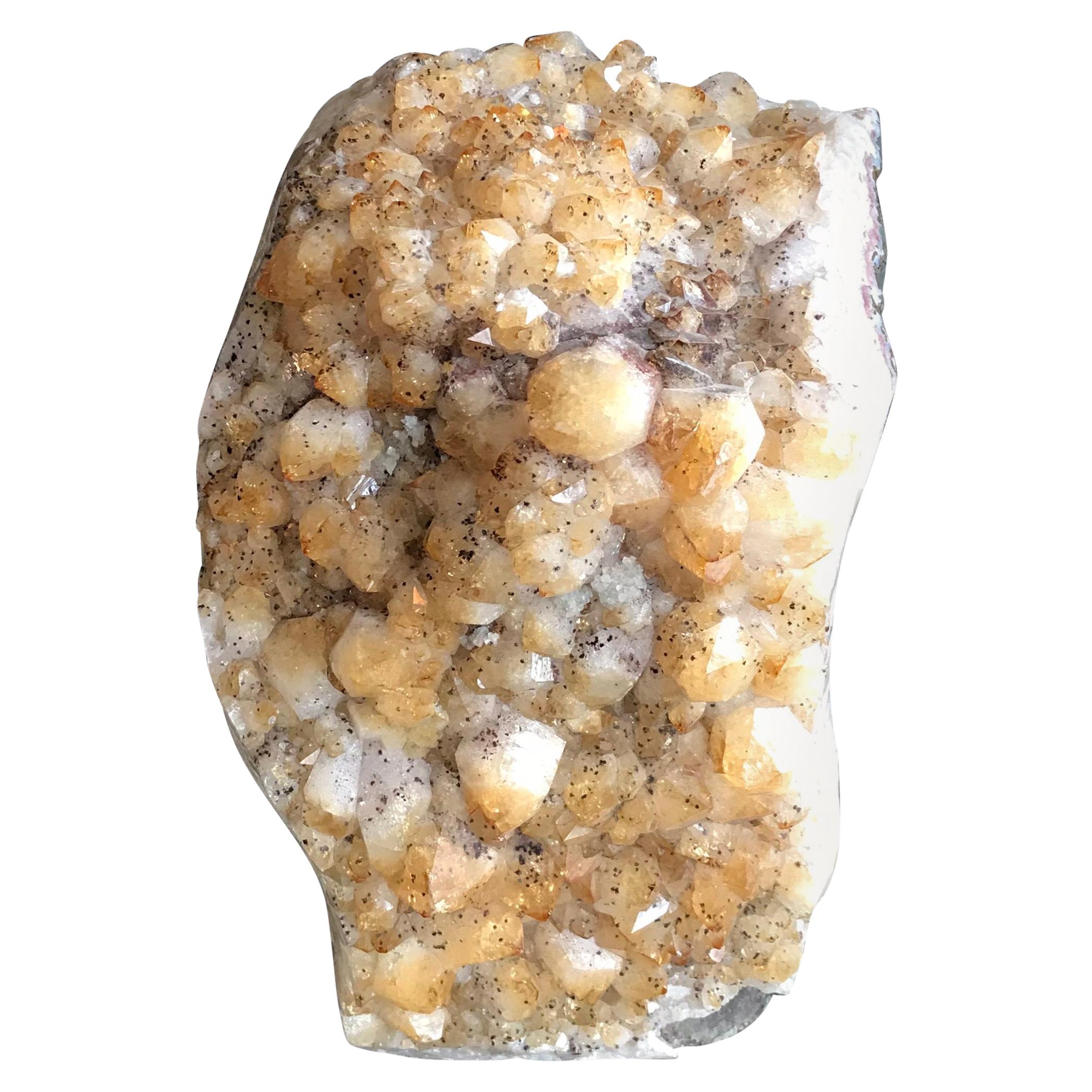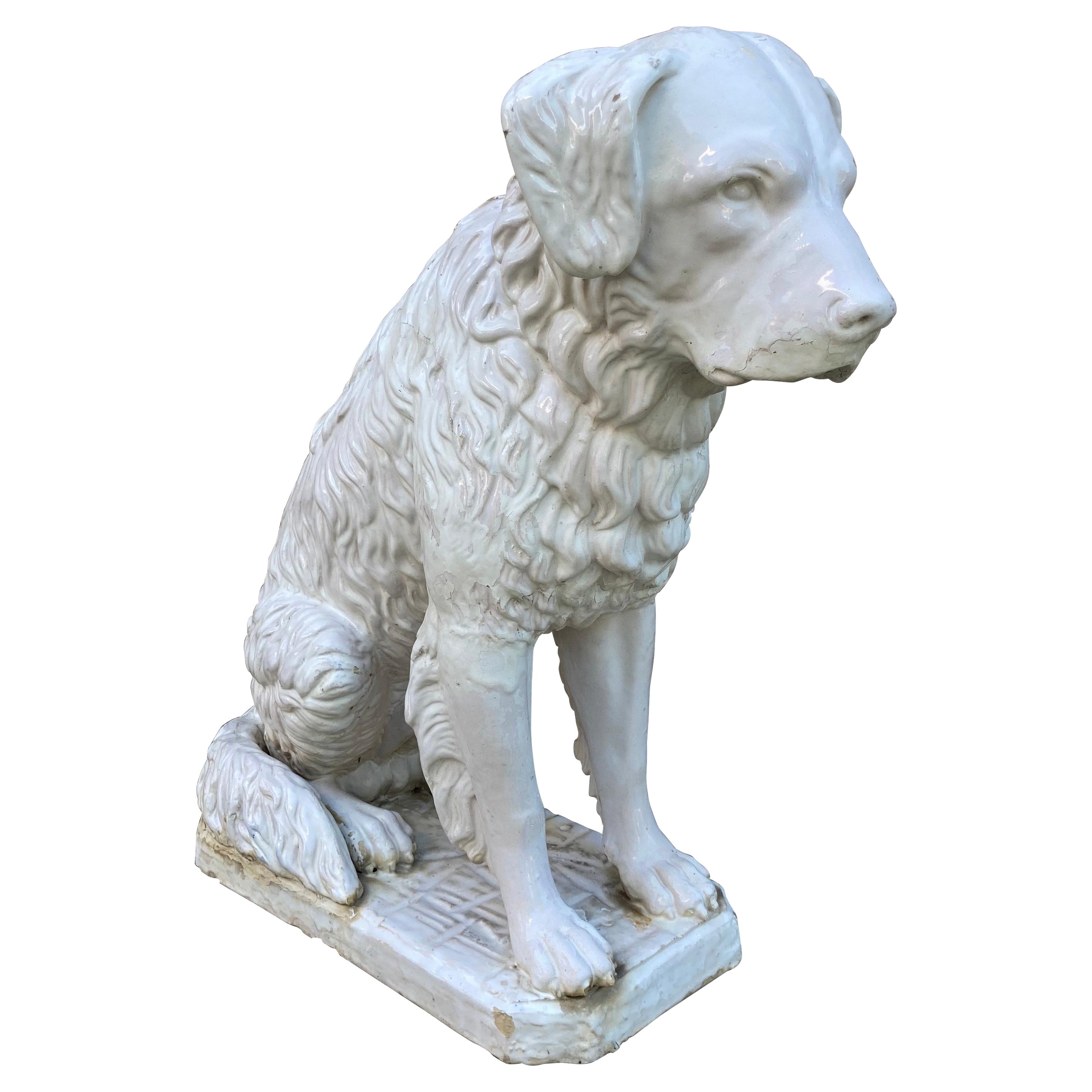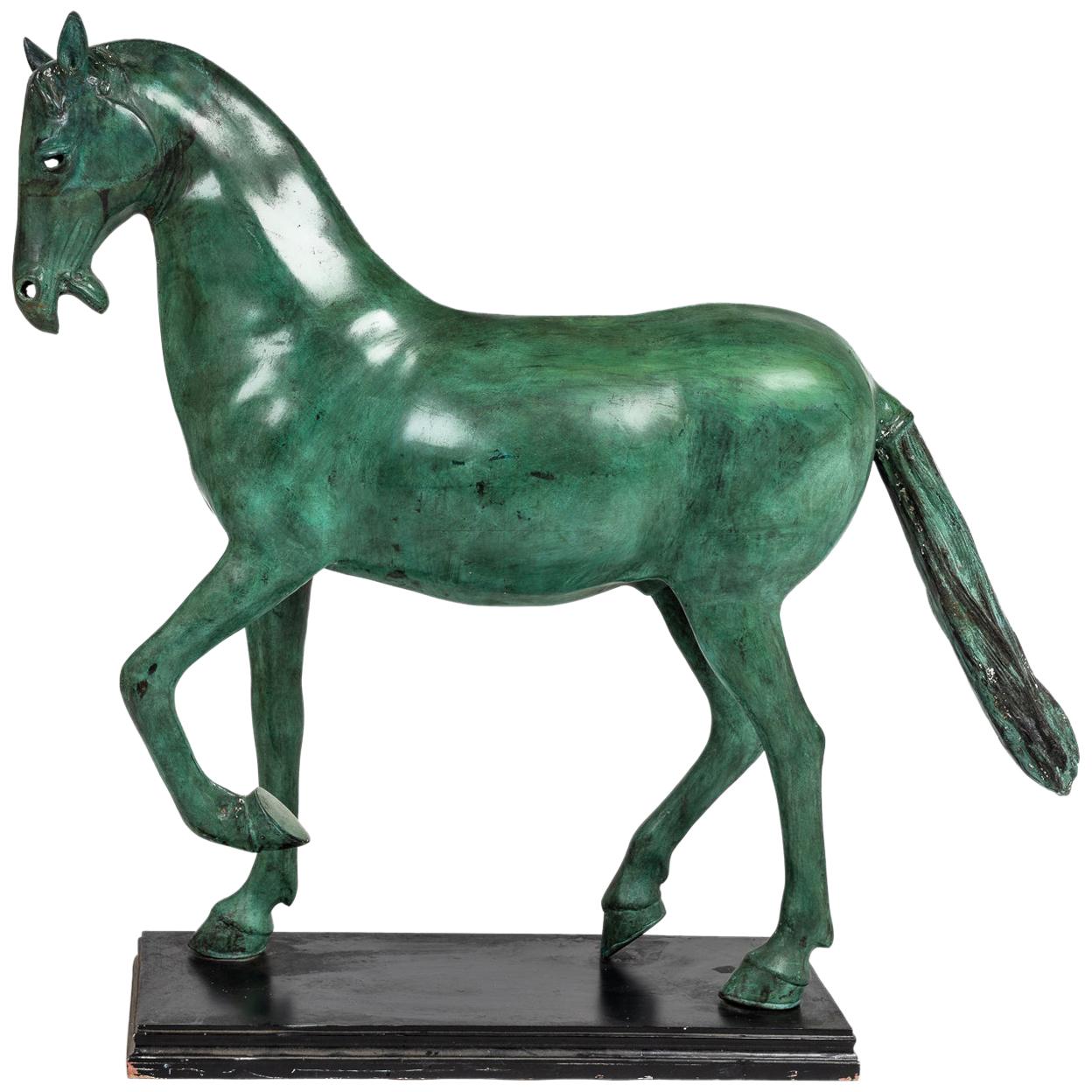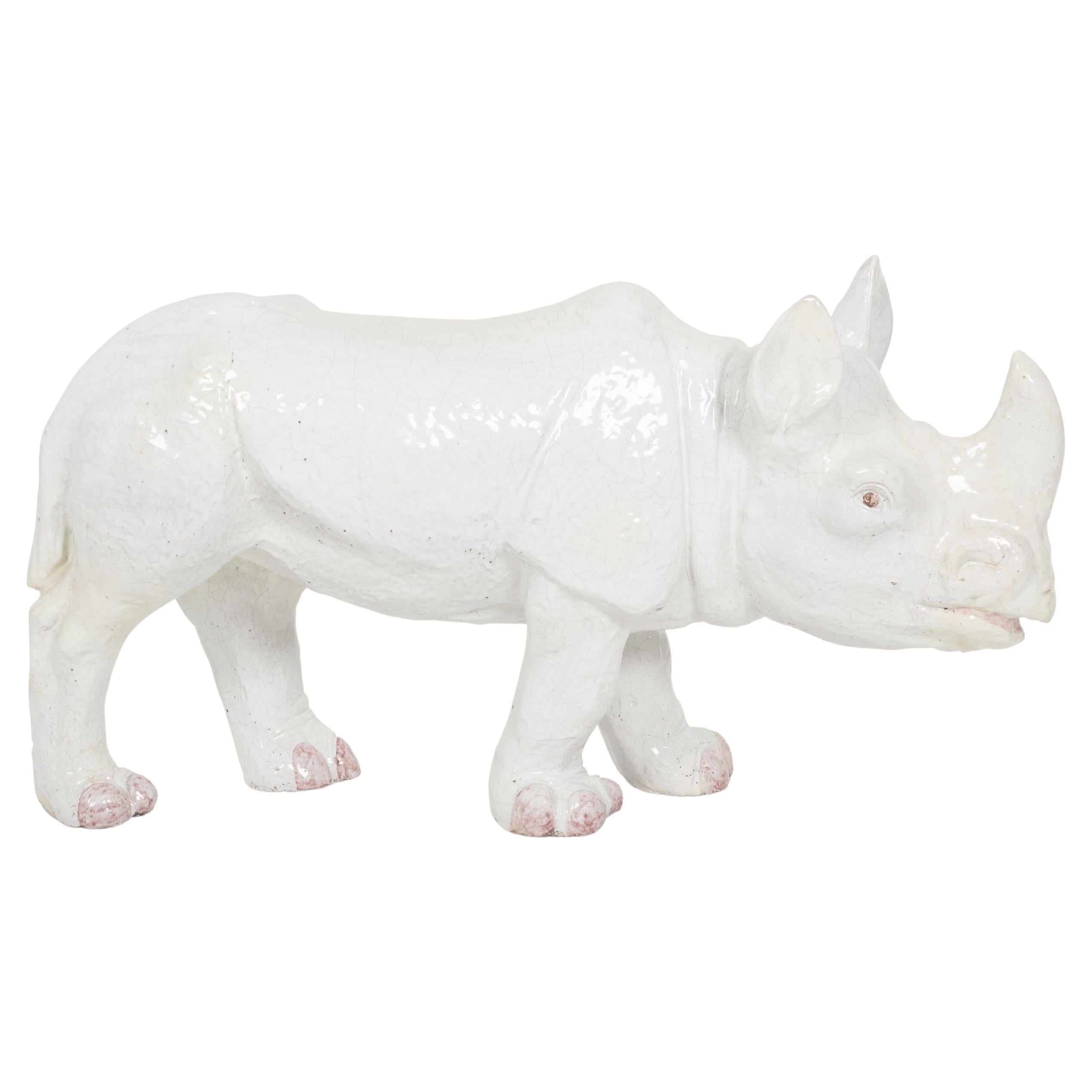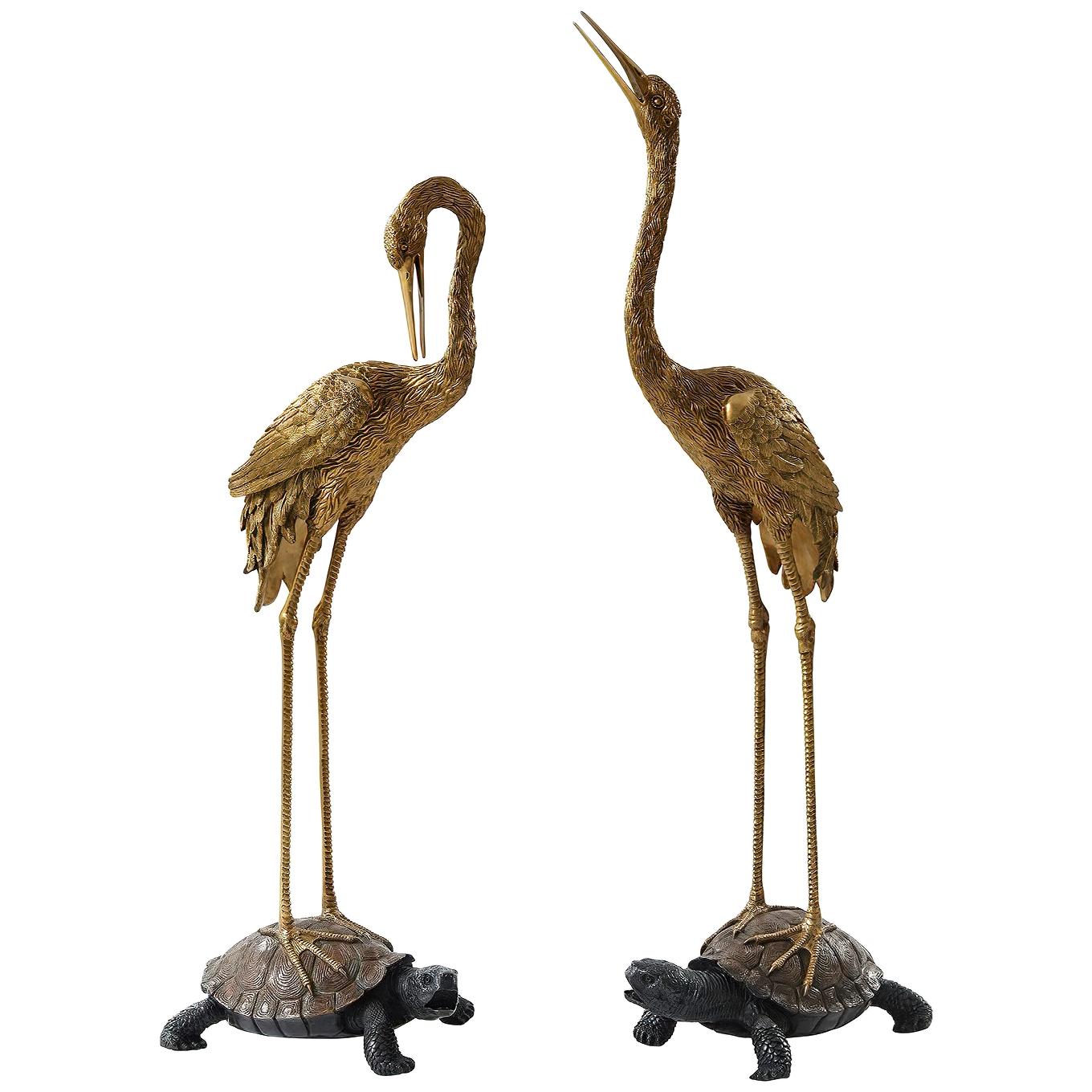Items Similar to Large Gogottte
Want more images or videos?
Request additional images or videos from the seller
1 of 9
Large Gogottte
About the Item
A rare Gogotte formation – a millions-of-years old naturally shaped sandstone concretion, consisting of tiny quartz fragments held together by calcium carbonate. The pale sandstone’s cloudlike naturally-occurring layers and swirls are formed when superheated water extrudes through crevices into a basin of extremely fine white silicate sand. The silica then cements the sand together to form the Gogotte’s fluid lines.
This specimen, like the finest found, comes from Fontainebleau, just south of Paris, France, which is renowned for its extremely fine-grained, porcelain-like sands. Louis XIV, “The Sun King” was so seduced by them that he had numerous specimens excavated to decorate the gardens at Versailles, and a great number of the ornately rounded, convoluted formations can be found surrounding the Grove of the Three Fountains (designed by Le Nôtre in 1677). Destroyed during the time of Louis XVI, the Grove was reconstructed in 2004, with the Gogottes appearing in all of their natural glory. They were known to have inspired the Surrealists, including sculptor Jean Arp, and their abstract forms can be compared to the best of modern sculpture.
- Dimensions:Height: 31.11 in (79 cm)Width: 42.13 in (107 cm)Depth: 9.85 in (25 cm)
- Materials and Techniques:
- Place of Origin:
- Period:
- Date of Manufacture:30 million years ago
- Condition:Intact fragment in excellent condition.
- Seller Location:London, GB
- Reference Number:1stDibs: LU5517235935162
About the Seller
5.0
Vetted Seller
These experienced sellers undergo a comprehensive evaluation by our team of in-house experts.
Established in 1910
1stDibs seller since 2020
- ShippingRetrieving quote...Ships From: London, United Kingdom
- Return PolicyThis item cannot be returned.
More From This SellerView All
- Half Triceratops SkullLocated in London, GBA partial skull of a fully grown Triceratops prorsus from the Maastrichtian, late Cretaceous period (68-65 million years ago). It is in three parts, and has an impressively sized nas...Category
Antique 15th Century and Earlier American Natural Specimens
MaterialsBone
- Edmontosaurus SkullLocated in London, GBAn impressive skull of an Edmontosaurus, a large herbivorous dinosaur that lived during the Late Cretaceous period, 68-66 million years ago. The three rows of sixty or more teeth on either side of the jaw, known as the ‘dental battery’, mark the Edmontosaurus as part of the Hadrosauridae, or duckbill family of dinosaurs. It belongs to the flat-skulled, or solid-crested, Hadrosaurinae, which replaced the older hollow-crested hadrosaurs. Edmontosaurus was one of the last non-avian dinosaurs to ever exist, living shortly before the Cretaceous-Paleogene extinction event. The Edmontosaurus was named in 1917 by Lawrence Lambe, after a partial specimen from Edmonton in Alberta, Canada. The existence of large Edmontosaur bone beds...Category
Antique 15th Century and Earlier American Natural Specimens
MaterialsBone
- Ancient Marble Portrait Bust of a Bearded Man possibly Lucius VerusLocated in London, GBThis impressive bust is depicted with head turned slightly to the right and gaze lifted. His eyes are articulated, with the pupils indicated with a drill, giving the face a striking realism. The shoulders are draped with a cloak. Straight brows sit beneath a mass of thickly curling hair, which continues to a full beard. It is worked with great skill, evident in the heavy drill work articulating and highlighting the voluminous curls, and the highly polished surfaces, giving the appearance of soft skin. The contrast between these textures gives a chiaroscuro affect which is one of the main traits of the best Antonine busts. Roman marble portraits reached their apotheosis of craftmanship and technique under the Antonine emperors, as is evidenced in this masterful bust. The evolution of the style may be traced back to the emperor Hadrian, who was the first emperor to wear a full beard. The articulation of pupils and iris appears on busts of his lover Antinous, a novelty which continued in later Antonine portraits, such as this one. The features of this bust point to a possible identification of Emperor Lucius Verus...Category
Antique 15th Century and Earlier Antiquities
MaterialsMarble
- Bronze SirenLocated in London, GBSirens were dangerous bird-like females who tempted sailors with their hauntingly beautiful song. In Homer’s Odyssey (XII, 39) Odysseus and his sailors were warned about the lethal c...Category
Antique 15th Century and Earlier Greek Classical Greek Antiquities
MaterialsBronze
- Bowl with Kufic InscriptionLocated in London, GBGlazed ceramic bowl with a convex wall and everted rim. With a cobalt blue inscription in the centre which reads, “baraka li-sahibihi” (blessing to its owner). Ceramics such as t...Category
Antique 15th Century and Earlier Antiquities
MaterialsCeramic
- Two Glass Inlay PairsLocated in London, GBTwo pairs of two halves from the same bar, finely detailed, with pointed ears and eyebrows, opaque yellow face, opaque red on the mouth, nose, eyes and ears, translucent cobalt blue edges to the mouth, nose and ears, with translucent emerald green leaves above and between the translucent cobalt blue brows and eye line, translucent pink pupils, with translucent cobalt blie and opaque white snake scales below the face, in translucent cobalt blue matrix, cut in the lower part of a cartouche design. These rare heads might represent the Agathos Daimon, the tutelary deity of Alexandria, who was also identified with Serapis, the male counterpart of Isis-Thermouthis (who in turn was a graecisized form of the early snake harvest goddess Renenutet). In a statue of Isis-Thermouthis in Alexandria museum (no. 25773, ex-collection King Farouk I), reproduced in Gotten, Pharaonen, no. 151, the snake goddess...Category
Antique 15th Century and Earlier Egyptian Antiquities
MaterialsGlass
You May Also Like
- Large QuartzLocated in Chicago, ILThis is a heavy quartz stone, has color of citrine quartz and has a green color on back.Category
Early 20th Century Brazilian Natural Specimens
MaterialsQuartz
- Large Ceramic DogLocated in East Hampton, NY19th century glazed ceramic figure of dog from Portugal. signed "Fabrica de Sto Antonio Porto" some over paint and age cracks but very sound.Category
Antique 19th Century Animal Sculptures
MaterialsCeramic
- Large Prehistoric AmmoniteLocated in New York City, NYPrehistoric ammonite fossil.Category
Antique 18th Century and Earlier Unknown Animal Sculptures
MaterialsStone
- Large Bronze HorseLocated in Munich, BavariaFabulous addition to any decor, large bronze handcrafted North African resting antelope sculpture. Very large vintage midcentury solid hollow cast bronze ...Category
20th Century Unknown Arts and Crafts Animal Sculptures
MaterialsBronze
- Large Ceramic RhinoBy Trouvailles Furniture Inc.Located in Chicago, ILCeramic Rhino by Trouvailles, France, showing natural crazing, painted toes, eyes and mouth.Category
Vintage 1970s French Mid-Century Modern Ceramics
MaterialsCeramic, Paint
- Large Crane StatuesLocated in Westwood, NJA set of two large variously patinated brass cranes, standing on walking turtles. Inspired by 19th century Japanese Meiji period originals. Dimensions: 13" W x 19" D x 58" H.Category
21st Century and Contemporary Vietnamese Meiji Animal Sculptures
MaterialsBrass
Recently Viewed
View AllMore Ways To Browse
Sun King
Antique Decorative Concrete
Large Antique Garden Sculptures
Large Antique Fountain
Large Antique Fragment
Large Modern Garden Sculptures
Water Fountain Modern
Large Modern Fountain
Large Water Fountain
Versailles Porcelain
Versaille Porcelain
Water Fountain Sculpture
Louis Sun King
Round Basin
Large Water Basin
Garden Of Versailles
Large Antique Garden Fountain
Louis 15th Furniture
